Category: Recommended Reading
MF Doom (1971 – 2020)
John Outterbridge (1933 – 2020)
Saturday, January 2, 2020
History from below
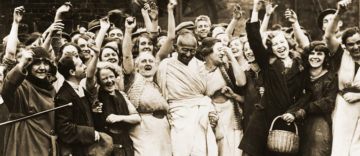 Priya Satia in Aeon:
Priya Satia in Aeon:
After the Second World War, historians asked us to shift our focus from great men to the actions and experiences of ordinary people, to culture rather than institutions. This methodological shift to ‘history from below’ was political, supporting a democratic vision of political, social, intellectual and cultural agency as the Cold War stoked authoritarian impulses in the East and West. It sought to rectify historians’ paternalistic habit of writing about the people ‘as one of the problems Government has had to handle’, as E P Thompson put it, as objects rather than subjects of history. Influential as this trend was, great-man history retained a cultural hold too and, today, the would-be ‘great men’ dominating political stages around the world, however caricature in form, challenge democratic visions of how history has been and should be made. ‘History from below’ succeeded in throwing out the chimera of great men while preserving the chimera of the nation that was the most common excuse for their invocation. Revisiting its origins might reveal why.
Thompson is perhaps the figure most popularly associated with ‘history from below’, specifically his totemic work, The Making of the English Working Class (1963). Expansive as its cast is, its geographical scope is constricting. Though set in the era of British conquest of vast swathes of the world, it barely acknowledges that reality. This is doubly strange, given that Thompson wrote it while decolonisation was forcing Britons to contend with the ethics of empire, and was himself descended from a line of colonial missionaries deeply engaged with such matters. His classic text created an island template for the most progressive British history of the late-20th century, unwittingly legitimising the nostalgic view of ‘Little England’ that has culminated in Brexit. The book’s enormous impact also ironically endowed Thompson with fairly robust great-man status himself, as the iconic historian-activist of his time.
More here.
Between the sacred and the secular
 Peter Gordon in The New Statesman:
Peter Gordon in The New Statesman:
Marxism has had a long and troubled relationship with religion. In 1843 the young Karl Marx wrote in a critical essay on German philosophy that religion is “the opium of the people”, a phrase that would eventually harden into official atheism for the communist movement, though it poorly represented the true opinions of its founding theorist. After all, Marx also wrote that religion is “the sentiment of a heartless world” and “the soul of soul-less conditions”, as if to suggest that even the most fantastical beliefs bear within themselves a protest against worldly suffering and a promise to redeem us from conditions that might otherwise appear beyond all possible change. To call Marx a “secularist”, then, may be too simple. Marx saw religion as an illusion, but he was too much the dialectician to claim that it could be simply waved aside without granting that even illusions point darkly toward truth.
In the 20th century the story grew even more conflicted. While Soviet Marxism turned with a vengeance against religious believers and sought to dismantle religious institutions, some theorists in the West who saw in Marxism a resource for philosophical speculation felt that dialectics itself demanded a more nuanced understanding of religion, so that its energies could be harnessed for a task of redemption that was directed not to the heavens but to the Earth. Especially in Weimar Germany, Marxism and religion often came together into an explosive combination. Creative and heterodox thinkers such as Ernst Bloch fashioned speculative philosophies of history to show that the religious past contained untapped sources of messianic hope that kept alive the “spirit of utopia” for modern-day revolution. Anarchists such as Gustav Landauer, a leader of post-1918 socialist uprising who was murdered by the far-right in Bavaria, strayed from Marxism into an exotic syncretism of mystical and revolutionary thought.
This strange chapter in the history of Marxist thought is of special relevance when we consider the ambivalent status of religion among the leading theorists associated with the Institute for Social Research, also known as the “Frankfurt School”.
More here.
Eager to Appropriate
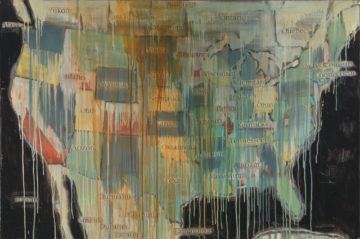
Mahmood Mamdani in Lapham’s Quarterly:
In the early period of American colonization, there was no reference to a place called Indian country. That is because every place was Indian country. Settlers in Maine rented land from Indians. In the Dutch and English colonies, settlers purchased land from Indians, either wholesale or piecemeal.
The term Indian country was first used in King George III’s Royal Proclamation of 1763. Under the system delineated by the Crown, Indian country was territory that Indians had the right to use but over which they did not have domain. The Crown retained the title to all colonized lands occupied by Indian tribes and granted the tribes use rights, which the king could revoke at will. Because the land belonged to the Crown, Indians who wished to sell their use rights could sell only to the Crown. After the War of Independence, the United States adopted the same scheme, and to this day Indians on reservations retain only “Indian title” or “right of occupancy.” Their holdings can be dissolved by congressional action.
The original language of the Constitution makes clear that Indians are aliens in the United States. The document makes just one substantive reference to Indians. In article 1, section 8, Congress is granted power “to regulate commerce with foreign nations and among the several states, and with Indian Tribes.” Leading theorists of the early republic also understood the Indians as a foreign challenger to settlement. In Federalist 24 Alexander Hamilton described “the savage tribes on our western frontier” as natural enemies of the United States and natural allies of the British and Spanish, and he cited Indian tribes as justification for maintaining a national defense force. In Federalist 25 Hamilton reiterated his view that Indians were foreign enemies, raising the specter that Britain and Spain would join forces with Indian tribes to encircle the union from Maine to Georgia. Later arguments for the Second Amendment right to form armed militias for collective defense of the “free state” are easily understood from the perspective of settlers who feared attacks by natives perceived to be enemies of that state.
The view of Indian tribes as enemies and aliens had to be squared with the undeniable fact that Indians lived in territories claimed by the nascent United States.
More here.
An Animation of Plato’s Cave Narrated by Orson Welles
Via Open Culture:
A Pandemic Dividend for Every American
 Christopher Mackin and Richard May in The New Republic:
Christopher Mackin and Richard May in The New Republic:
With vaccinations underway and the Biden administration about to assume power, attention will soon return to an assessment of the true damage that Covid-19 has wreaked on the American economy. At this moment, it’s important to take stock of the various rescue measures that have been extended by the federal government and consider how they should be amended in the future. Above and beyond the $900 billion stimulus recently signed by President Trump, over the next two to four years it is likely that between $5 to $10 trillion dollars of taxpayer money, in the form of taxpayer-backed loans and loan guarantees, will be expended to save American businesses and jobs. That level of government aid, the largest on record in American history, will likely require more than a generation of productive effort to pay back. A reckoning with the government’s role in rescuing the economy in this fashion also creates an opportunity to pose some of the larger questions about productivity, fairness, and economic inequality that preceded the pandemic.
The preservation of employment, and the need to ensure that those vital paychecks that sustain workers and their families keep getting cut, has been foremost in the minds of policymakers during the pandemic. Presuming taxpayer-provided funds and guarantees will continue to play a key role in the recovery of private sector employers, incumbent shareholders should not be the sole beneficiaries of recovered value. Instead, it should be shared with employees working at all levels of each firm receiving assistance and with each and every citizen whose tax dollars are the ultimate source of funds for the recovery.
More here.
Bruno Latour – The Anthropocene and the Destruction of the Image of the Globe
Cats and The Meaning of Life
Jennifer Szalai at the New York Times:
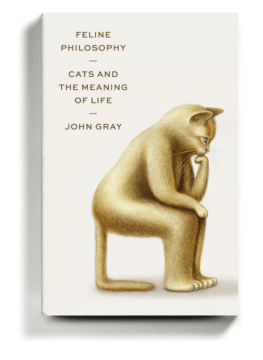 On the face of it, “Feline Philosophy” would seem like a departure for Gray — a playful exploration of what cats might have to teach humans in our never-ending quest to understand ourselves. But the book, in true Gray fashion, suggests that this very quest may itself be doomed. “Consciousness,” he writes, “has been overrated.” We get worried, anxious and miserable. Our vaunted capacity for abstract thought often gets us (or others) into trouble. We may be the only species to pursue scientific inquiry, but we’re also the only species that has consciously perpetrated genocides. Cats, unlike humans, don’t trick themselves into believing they are saviors, wreaking havoc in the process. “When cats are not hunting or mating, eating or playing, they sleep,” Gray writes. “There is no inner anguish that forces them into constant activity.”
On the face of it, “Feline Philosophy” would seem like a departure for Gray — a playful exploration of what cats might have to teach humans in our never-ending quest to understand ourselves. But the book, in true Gray fashion, suggests that this very quest may itself be doomed. “Consciousness,” he writes, “has been overrated.” We get worried, anxious and miserable. Our vaunted capacity for abstract thought often gets us (or others) into trouble. We may be the only species to pursue scientific inquiry, but we’re also the only species that has consciously perpetrated genocides. Cats, unlike humans, don’t trick themselves into believing they are saviors, wreaking havoc in the process. “When cats are not hunting or mating, eating or playing, they sleep,” Gray writes. “There is no inner anguish that forces them into constant activity.”
more here.
Wood
Daniel Grossman at The Washington Post:
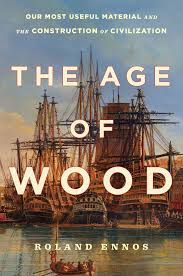 Though wood still plays an important role in the construction of our homes — think two-by-four stud supports and plywood in walls, flooring and roofing — our eye most often falls on exteriors covered in synthetic materials like vinyl siding. Some playgrounds that once featured lots of wood now have our kids screaming atop molded plastic play sets. And thousands of readers will take in this review on a digital device, not on a sheet of paper made from dried wood pulp. In a world where wood is, if not absent, increasingly out of sight, British biologist Roland Ennos suggests we may not be paying enough attention to its importance. He contends that wood is not merely useful but central to human history. “It is the one material,” Ennos writes in “The Age of Wood,” “that has provided continuity in our long evolutionary and cultural story, from apes moving about the forest, through spear-throwing hunter-gatherers and ax-wielding farmers to roof-building carpenters and paper-reading scholars.”
Though wood still plays an important role in the construction of our homes — think two-by-four stud supports and plywood in walls, flooring and roofing — our eye most often falls on exteriors covered in synthetic materials like vinyl siding. Some playgrounds that once featured lots of wood now have our kids screaming atop molded plastic play sets. And thousands of readers will take in this review on a digital device, not on a sheet of paper made from dried wood pulp. In a world where wood is, if not absent, increasingly out of sight, British biologist Roland Ennos suggests we may not be paying enough attention to its importance. He contends that wood is not merely useful but central to human history. “It is the one material,” Ennos writes in “The Age of Wood,” “that has provided continuity in our long evolutionary and cultural story, from apes moving about the forest, through spear-throwing hunter-gatherers and ax-wielding farmers to roof-building carpenters and paper-reading scholars.”
more here.
Our Top Money Lessons of 2020
Kendall Little in The New York Times:
2020 was, well, tumultuous to say the least.
 The COVID-19 pandemic and recession caused devastating long-term unemployment and income losses for many, historic low interest rates for borrowers, and stock market highs for investors. Since NextAdvisor’s launch in June, we’ve followed along, looking to the experts and Americans directly affected to better understand — and share — how it all impacts your wallet. As we say goodbye to 2020, our writers and editors are reflecting on what we learned, and want to share some new practices we’re bringing into the new year. The coronavirus pandemic hit the United States in early March, resulting in millions of jobs lost, shuttered businesses, and deep uncertainty about the future. At its peak in April, the unemployment rate reached 14.7%. Today, more than 12 million people remain unemployed. And while the CARES Act initially kept unemployed workers afloat through expanded federal unemployment benefits and relief programs, people unable to return to work are facing real financial cliffs when more programs end later this month.
The COVID-19 pandemic and recession caused devastating long-term unemployment and income losses for many, historic low interest rates for borrowers, and stock market highs for investors. Since NextAdvisor’s launch in June, we’ve followed along, looking to the experts and Americans directly affected to better understand — and share — how it all impacts your wallet. As we say goodbye to 2020, our writers and editors are reflecting on what we learned, and want to share some new practices we’re bringing into the new year. The coronavirus pandemic hit the United States in early March, resulting in millions of jobs lost, shuttered businesses, and deep uncertainty about the future. At its peak in April, the unemployment rate reached 14.7%. Today, more than 12 million people remain unemployed. And while the CARES Act initially kept unemployed workers afloat through expanded federal unemployment benefits and relief programs, people unable to return to work are facing real financial cliffs when more programs end later this month.
Throughout the year, we spoke with Americans laid off from some of the hardest-hit industries, as well as small business owners struggling to stay afloat. We learned about the confusion people felt navigating a complicated, fluctuating system which kept many from receiving the benefits they were owed and others without a plan when that financial lifeline was cut short. Most recently, we shared the experiences of a few people who have made long-term life changes in response to the hardship they faced this year. As the challenges continue into 2021, we recognize the importance of continuing to share stories like these, and providing resources for those still struggling. Here’s some of our best coverage of resources and information to help navigate these financial challenges:
More here.
The Myth of Self-Reliance
Jenny Odell in The Paris Review:
 “The Over-Soul” is my favorite essay, but Emerson is better known for “Self Reliance,” that famous paean to individualism. This is the one where Emerson declares that “[w]hoso would be a man must be nonconformist,” and disdains society as “a join-stock company, in which the members agree, for the better securing of his bread to each shareholder, to surrender the liberty and culture of the eater.” Again, the writing is seductive. For anyone adrift in the world, it is reassuring to hear that “[n]othing can bring you peace but yourself,” or that mental will can triumph over fate. It can really be this simple: “In the Will work and acquire, and thou hast chained the wheel of Chance, and shalt sit hereafter out of fear from her rotations.”
“The Over-Soul” is my favorite essay, but Emerson is better known for “Self Reliance,” that famous paean to individualism. This is the one where Emerson declares that “[w]hoso would be a man must be nonconformist,” and disdains society as “a join-stock company, in which the members agree, for the better securing of his bread to each shareholder, to surrender the liberty and culture of the eater.” Again, the writing is seductive. For anyone adrift in the world, it is reassuring to hear that “[n]othing can bring you peace but yourself,” or that mental will can triumph over fate. It can really be this simple: “In the Will work and acquire, and thou hast chained the wheel of Chance, and shalt sit hereafter out of fear from her rotations.”
I was far from immune to this essay. I underlined “the great man is he who in the midst of the crowd keeps with perfect sweetness the independence of solitude.” But the more I looked back on it, the more I began to wrestle with the essay’s blind spot. I didn’t immediately see it, because the blind spot was also my own.
…None of this is to say that “Self Reliance” isn’t useful as a model of refusal and commitment. In his own time, Emerson was an outspoken opponent of slavery, the Mexican-American War, and the removal of Native Americans from their land. In our time, we could surely use the reminders to examine our relationship with public opinion and to maintain a sense of principled intuition. The best version of Emerson’s individualism is bracing, like a splash of cold water to the face, or a friend shaking you by the shoulders in order to snap you out of a daze. But for me, as for many others, everything outside the self fades away too quickly in “Self Reliance”: all of the people and circumstances that have influenced my experience of independence, my conception of my self, and even the very terms with which I think. It hides the losses that appear as my gains. And by placing the will so high above circumstance, it projects an untruthful image of equal opportunity in which the unfortunate should have just tried harder.
More here.
Friday, January 1, 2020
Where Year Two of the Pandemic Will Take Us
Ed Yong in The Atlantic:
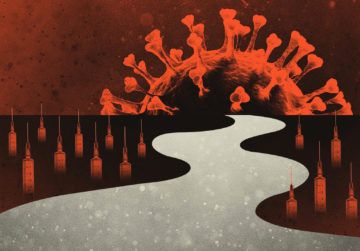 The coronavirus pandemic ignited at the end of 2019 and blazed across 2020. Many countries repeatedly contained it. The United States did not. At least 19 million Americans have been infected. At least 326,000 have died. The first two surges, in the spring and summer, plateaued but never significantly subsided. The third and worst is still ongoing. In December, an average of 2,379 Americans have died every day of COVID-19—comparable to the 2,403 who died in Pearl Harbor and the 2,977 who died in the 9/11 attacks. The virus now has so much momentum that more infection and death are inevitable as the second full year of the pandemic begins. “There will be a whole lot of pain in the first quarter” of 2021, Anthony Fauci, the director of the National Institute of Allergy and Infectious Diseases, told me.
The coronavirus pandemic ignited at the end of 2019 and blazed across 2020. Many countries repeatedly contained it. The United States did not. At least 19 million Americans have been infected. At least 326,000 have died. The first two surges, in the spring and summer, plateaued but never significantly subsided. The third and worst is still ongoing. In December, an average of 2,379 Americans have died every day of COVID-19—comparable to the 2,403 who died in Pearl Harbor and the 2,977 who died in the 9/11 attacks. The virus now has so much momentum that more infection and death are inevitable as the second full year of the pandemic begins. “There will be a whole lot of pain in the first quarter” of 2021, Anthony Fauci, the director of the National Institute of Allergy and Infectious Diseases, told me.
But that pain could soon start to recede. Two vaccines have been developed and approved in less time than many experts predicted, and are more effective than they dared hope. Joe Biden, the incoming president, has promised to push for measures that health specialists have championed in vain for months. He has filled his administration and COVID-19 task force with seasoned scientists and medics. His chief of staff, Ron Klain, coordinated America’s response to the Ebola outbreak of 2014. His pick for CDC director, Rochelle Walensky, is a widely respected infectious-disease doctor and skilled communicator. The winter months will still be abyssally dark, but every day promises to bring a little more light.
More here.
The stupidity of the intelligent
Forester McClatchey in the Washington Examiner:
 The Complete Works of Alberto Caeiro, translated by Margaret Jull Costa and Patricio Ferrari, presents the work of a complicated man. Caeiro was born in Lisbon in 1889, but he spent most of his life in the countryside. He received almost no formal education, but he was a passionate poet. At 25, he died of tuberculosis. Looking back, we can only be sure of one fact regarding Caeiro: He did not exist.
The Complete Works of Alberto Caeiro, translated by Margaret Jull Costa and Patricio Ferrari, presents the work of a complicated man. Caeiro was born in Lisbon in 1889, but he spent most of his life in the countryside. He received almost no formal education, but he was a passionate poet. At 25, he died of tuberculosis. Looking back, we can only be sure of one fact regarding Caeiro: He did not exist.
Or, more accurately, he was a fiction. A Portuguese poet named Fernando Pessoa made him up. Pessoa was an odd bird, a flaneur who haunted the cafes of early 20th-century Lisbon, sipping wine, scribbling poems on napkins, and leading dozens of lives between his ears. If his literature has a central precept, it is that there is no such thing as a stable, central self.
More here.
Zaouli: A traditional dance of the Guro people of central Ivory Coast
The architect of New Zealand’s COVID elimination strategy
Marc Daalder in Newsroom:
 Michael Baker figures he was the first public health expert in the world to talk about eliminating Covid-19, though he’s not sure why.
Michael Baker figures he was the first public health expert in the world to talk about eliminating Covid-19, though he’s not sure why.
“Using that terminology which is straight from the infectious disease 101, it’s a really standard term,” he tells Newsroom during a recent interview in Newtown, near the University of Otago’s Wellington campus.
“The world has a measles and rubella elimination approach. New Zealand has theoretically eliminated those diseases. There’s certainly a global polio elimination/eradication programme. So I just thought I was saying the obvious, but it can’t have been the obvious because no one else was saying it.”
This was before New Zealand even made the decision to go into lockdown, when Baker — a professor at Otago’s Department of Public Health and a member of the Government’s Technical Advisory Group on Covid-19 — was the lone voice for what he was then terming a “pulse lockdown”.
More here.
Bruno Latour – The Puzzling Face of a Secular Gaia
The Gate of Heaven Is Everywhere
Fred Bahnson at Harper’s Magazine:
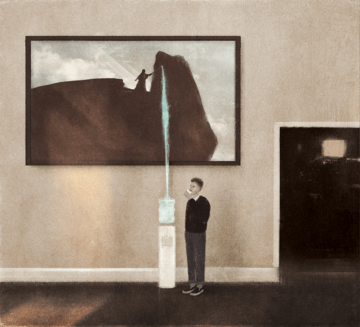 Since Rohr founded the Center for Action and Contemplation in 1987, his aim has been to revive the Christian contemplative tradition. For a growing number of Christendom’s defectors, his teachings have provided a bridge, even a destination. Through conferences, podcasts, dozens of books, a two-year curriculum called the Living School, and his newsletter, Rohr has become a leading voice for a growing population within American Christianity: those who were leaving the church not because they were done with Christianity, but because they were drawn to its more ancient, mystical expressions. In addition to the two thousand attendees from fifty states and fifteen countries, nearly three thousand more people from forty-two countries joined via webcast. I bought one of the last tickets before the conference sold out. To his credit, Rohr is quick to say that whatever popularity he enjoys is not because of himself—“God deliberately made me not so good-looking. I’m short and dumpy, a B student . . . and I don’t think I’m a saint”—but because he speaks on behalf of what he calls the perennial tradition, a lineage rooted in Christianity but that he says is present in all faiths.
Since Rohr founded the Center for Action and Contemplation in 1987, his aim has been to revive the Christian contemplative tradition. For a growing number of Christendom’s defectors, his teachings have provided a bridge, even a destination. Through conferences, podcasts, dozens of books, a two-year curriculum called the Living School, and his newsletter, Rohr has become a leading voice for a growing population within American Christianity: those who were leaving the church not because they were done with Christianity, but because they were drawn to its more ancient, mystical expressions. In addition to the two thousand attendees from fifty states and fifteen countries, nearly three thousand more people from forty-two countries joined via webcast. I bought one of the last tickets before the conference sold out. To his credit, Rohr is quick to say that whatever popularity he enjoys is not because of himself—“God deliberately made me not so good-looking. I’m short and dumpy, a B student . . . and I don’t think I’m a saint”—but because he speaks on behalf of what he calls the perennial tradition, a lineage rooted in Christianity but that he says is present in all faiths.
more here.
What Thomas Jefferson Could Never Understand About Jesus
Vinson Cunningham at The New Yorker:
 Since 2011, a monument to Martin Luther King, Jr., has sat across the water from the Jefferson Memorial, almost engaging it in a staring contest. The result is a rich spatial symbolism: two ways of seeing Christ duking it out. King saw Jesus in much the way that Douglass did: as a savior, a redeemer, and a liberator sorely degraded by those who claimed his name most loudly. During the Montgomery bus boycott, King reportedly carried a copy of “Jesus and the Disinherited,” a short, beautiful book by the minister and writer Howard Thurman. Thurman had travelled to India, where he made sure to meet Gandhi, whose doctrine of nonviolence he admired; he took what he learned from him back to America, planting an important intellectual seed that would blossom during the civil-rights movement. In his preaching and writings, Thurman reoriented what he called “the religion of Jesus,” pointing out what it might mean for those who had lived for so long under the thumb of the likes of Jefferson. Jefferson’s Jesus is an admirable sage, fit bedtime reading for seekers of wisdom. But those who were weak, or suffering, or in urgent trouble, would have to look elsewhere. “The masses of men live with their backs constantly against the wall,” Thurman wrote. “What does our religion say to them?”
Since 2011, a monument to Martin Luther King, Jr., has sat across the water from the Jefferson Memorial, almost engaging it in a staring contest. The result is a rich spatial symbolism: two ways of seeing Christ duking it out. King saw Jesus in much the way that Douglass did: as a savior, a redeemer, and a liberator sorely degraded by those who claimed his name most loudly. During the Montgomery bus boycott, King reportedly carried a copy of “Jesus and the Disinherited,” a short, beautiful book by the minister and writer Howard Thurman. Thurman had travelled to India, where he made sure to meet Gandhi, whose doctrine of nonviolence he admired; he took what he learned from him back to America, planting an important intellectual seed that would blossom during the civil-rights movement. In his preaching and writings, Thurman reoriented what he called “the religion of Jesus,” pointing out what it might mean for those who had lived for so long under the thumb of the likes of Jefferson. Jefferson’s Jesus is an admirable sage, fit bedtime reading for seekers of wisdom. But those who were weak, or suffering, or in urgent trouble, would have to look elsewhere. “The masses of men live with their backs constantly against the wall,” Thurman wrote. “What does our religion say to them?”
more here.
